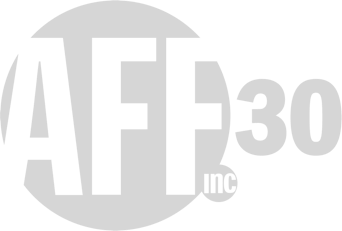My FESPACO Diary: One Filmmaker's Journey to Africa's Oscars
Above Photo: FESPACO Headquarters (Iquo B. Essien)
After an October 2014 coup toppled the 27-year presidency of Blaise Compaoré, most thought the Panafrican Film and Television Festival of Ouagadougou (FESPACO) would be cancelled. Compaoré played a role in his own demise. When he proposed a constitutional amendment lifting term limits, which would have allowed him to run for President a fifth time, more than 1 million Burkinabés marched on the National Assembly, halting the vote by burning the building—and the adjacent Hotel Independance, where parliamentarians were lodged—to the ground. In the aftermath, the military took over and Compaoré was forced to resign, fleeing the country on a wave of popular dissent.
Though FESPACO organizers maintained that the show would go on, scant weeks before its opening no announcement had been made as to what films would be screening. When a friend posted a congratulatory message on my Facebook wall, I still hadn’t heard back on my submission. Skeptical, I visited the festival website and found an announcement listing my short film, Aissa’s Story, as an official festival selection. For years I had dreamed of attending FESPACO, the continent’s version of the Oscars that convenes biennially in Ouagadougou, Burkina Faso. The fact that it happened every other year made it seem even more like a myth. Ousmane Sembene. Haile Gerima. Mahamat Saleh Haroun. These and many others had won the coveted Étalon de Yennenga prize, some from countries that didn’t even have cinemas. I had a hard time imagining myself walking in their footsteps.
It wasn’t until a few days later that I received an email—addressed to Sir Iquo Essien—that confirmed it, asking for a DVCam and Blu Ray of my film to be sent immediately to FESPACO. The theme of the 24th Edition, “African Cinema: Production and Distribution in the Digital Era,” reflected a major shift in festival policy. Digital films could be submitted, as opposed to only 35mm film prints, and the French subtitles requirement was relaxed, leading to a surge in Anglophone African films. ECOWAS had also announced a new prize for Best Female Director, promoting women’s roles in innovation and development. I accepted the invitation to attend, writing:
“Thank you for this letter. I will send the copies. I have explained several times already that I am a woman. Please be advised that I cannot use an invitation letter calling me Sir. I am Ms. Iquo B. Essien. Thank you.”
In short order, the festival organizers corrected my title and re-sent the letter. I hoped the small act might symbolize the death of a set of preconceived notions about FESPACO, namely: that it was a festival dominated by men, Francophone Africans, and established, as opposed to emerging, filmmakers. Some of these ideas had their roots in fact, given that Francophone Africans, unlike those in the British and Belgian ex-colonies, benefited historically from funding by the French Ministry of Cooperation.
These filmmakers used their art as a tool for reclaiming the image of Africa post-independence, as well as political and cultural autonomy. These goals converged with the 1969 creation of FESPACO and the Federation of African Filmmakers promoting production, distribution and exhibition—that were, at the time, primarily Francophone male endeavors, though Anglophones and women have since been invited to the table.
Now forty years later, there exist two strands of African filmmaking that, quite literally, still struggle to speak to each other. But then there are films like mine—a story about a Francophone African immigrant housekeeper, inspired by the very public journey of Nafissatou Diallo, directed by a woman of Anglophone African parentage—that sit at a curious nexus between all these. My hope was to create a truly universal, bilingual film that spoke to everyone. So I spent the five weeks leading up to FESPACO, with the exception of a few days in France for CinéSud, in preparation: designing posters and postcards, subtitling my film in French (and English), burning Blu Rays and DVDs, mailing my screeners to Ouagadougou, and checking my email every day for confirmation they’d been received.
Ultimately, when my film got lost in the mail, I was instructed to hand deliver it to the projectionist upon arrival—the thought of which made me anxious, since I had heard horror stories about screenings being cancelled altogether. Taking a deep breath, I burned several extra Blu Rays and, camera in hand, boarded a flight for FESPACO.
GETTING THERE
A few rows back, I spotted Ghanaian director Akosua Adoma Owusu sitting on the opposite side of the plane. We had met back in May at the African Film Festival New York run by veteran programmer, Mahen Bonetti. Adoma was a wunderkind of sorts, with dual degrees in art and film that she’d parlayed into screenings at venues as wide ranging as the Whitney Museum of Art and the Berlinale. She slid into one of the empty seats beside me and we passed the flight chatting and watching in-flight movies, one of which—Render to Caesar, starring Gbenga Akinnagbe and Wole Ojo—would be screened at FESPACO.
Eight hours later, after a fish and rice dinner, we landed in Morocco where a stone-faced control officer inspected my travel documents in a booth decked with a happy-face sticker that read: SMILE, YOU’RE IN CASABLANCA. It was a strange juxtaposition to his icy stare, flipping through my Nigerian passport looking for a visa.
“I don’t need one to travel to Burkina Faso,” I explained, both in English and broken French.
Visa-free travel was one of the perks of having an ECOWAS passport, although he was the fifth airport official I’d encountered who didn’t know that. Eventually he stamped my passport, motioning me down a walkway to hotel accommodations for our 16-hour layover.With vouchers from the travel office, Adoma and I dragged our bags outside into the chilly, clear dawn. Waiting for the hotel shuttle, we snapped pictures of the airport, sunrise, and lazy palm trees in the distance. Casablanca was a beautiful city. I wanted to see more of it than just the hotel, but ended up sleeping most of the layover away, before we boarded another plane for Ouagadougou.
We landed in Burkina Faso at midnight. Having lost Adoma in the passport check line, I wandered down to the arrivals lobby alone. A swarm of hawkers and cabbies milled around outside, dimly illuminated by the neon red sign of the Aéroport International de Ouagadougou. Peering into the crowd, I scanned their faces looking for someone from FESPACO.
“Taxi?” a portly man in a plaid shirt asked, waving his hand toward the parking lot.
“Non merci,” I replied, wandering back inside.
All told, the entire trip had taken more than 30 hours. I was beyond exhausted. If someone didn’t show up soon, I was going to have a problem.
Sensing my desperation, a pretty, apple-faced woman in a batik shirt approached me.
“Are you here for FESPACO?” she asked.
“Yes,” I replied, breathing a sigh of relief.
Crossing my name off a list, she wheeled my luggage outside where I found Adoma standing with a group of people. Minutes later, we sat in the waiting room of an adjacent building watching a recap of the festival’s opening ceremony that we’d missed earlier that evening. The 5000-seat Palais de Sportes stadium overflowed with spectators who were regaled with a variety of performances by men on stilts, dance troupes, and Senegalese musician Ismaël Lô.
As the TV blared, a stream of women in the same matching batik shirts attended to guests with visa issues while the organizers dispatched hotel shuttles. I recognized at least a dozen people from our flight alone and a dozen more from the airport. The scope of the ceremony, plane tickets, hotels, and support staff defied comprehension, suggesting vast sums of money and/or government sponsorship.
Not only was the entire country of Burkina Faso seemingly involved in FESPACO, but every major African filmmaker, journalist, actor, and programmer as well—making it the largest festival I’d ever attended.
Soon they rounded us up for a shuttle to the Golden Tulip Hotel—a statuesque building that rose high above a lake at the edge of town. At the check-in desk, we received our room cards and wi-fi passwords, but no festival brochures. Speculating that the organizers would drop packets off in the morning, we said good night and rode the elevators up to our rooms.
Dropping my bags on the floor, I drew open the curtains and gazed out at the lake ringed with lights that set the water aglow. Even in the dead of night, the view was breathtaking. Removing my shoes, I collapsed into bed and fell into a deep, dreamless sleep.
DAY ONE
In the morning, I ate a quick breakfast at the hotel restaurant overlooking the swimming pool. Grabbing some fruit and two croissants, I sat down at a table with Djia Mambu, a journalist from Congo-Brazzaville, and Ayuko Babu, a distinguished gentleman who helped found the Pan African Film Festival. Before we could start a proper conversation, Adoma rushed in.
“Iquo, your film is playing at 11!”
“Are you sure?” I replied, glancing at the clock; it was past ten. I didn’t even know where the cinema was.
“I just saw the screening schedule. We might have to take a cab to the theatre, I don’t think there’s a shuttle,” she added.
Inhaling the fruit, I ran into the lobby where a FESPACO booth manned by a pair of twenty-somethings had appeared. Between them, they shared a single copy of the screening schedule and catalogue listing 134 films. We could copy it, they said, if we needed to. My film was showing at Cine Neerwaya in exactly 45 minutes—and none of us had any francs for a cab. While Djia changed money at the front desk, Adoma and I ran outside to the parking lot where the hotel taxi driver quoted an exorbitant 4000 francs. Appalled, we walked out to the main road where we waved our arms in the dry heat trying to hail one of the cheaper green taxis. Five minutes later, sweat trailed down my legs and still, even with Djia’s help, we couldn’t hail a cab. A trickle of cars passed by, but no taxis; we were too far off the main road.
Adoma and I left Djia in the street and went back to the parking lot to try and negotiate with the cabbie. We settled on 3000 francs, scooping Djia up as we headed downtown along the Avenue du Président Thomas Sankara—named for the slain leader whose radical, anti-imperialist policies cost him his life, many believe, at the hands of the now disgraced Compaoré. The road teemed with cars, buses, and fleets of motorbikes—the preferred mode of transport, used by a preponderance of women—and a small herd of goats on leashes, tugged along by a weather-beaten man in a cap and shorts. We sped past a string of embassies, schools, and the Museum of Music, all coated in a layer of dust blown in by the windy harmattan.
Their front gates were low and accessible, absent the barbed wire and shards of glass one might see in Nigeria. Missing also were the haphazard police checkpoints, set up every few kilometers with a plank of wood and a few nails. Traffic flowed along smoothly and, fifteen minutes later, we arrived at Cine Neerwaya without so much as a roadside squabble. I felt like I’d entered some kind of nirvana. There they were, post-revolution Burkinabés co-existing peacefully with a sense of order and direction.
It was Africa 3.0, something I’d read about in future-gazing books and blogs, but had yet to really experience. And film was right at the center of it—making this FESPACO 3.0.
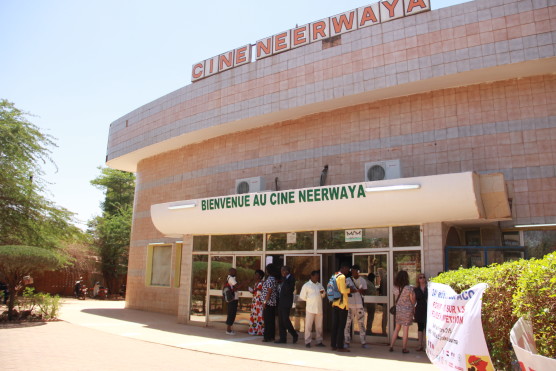
Absent a festival badge, I talked my way past the security check and hand sanitizing station—where a man in a lab coat squirted a blob of clear liquid in my palm—over to a FESPACO official, who pointed me to the projectionist’s booth. At five minutes to 11:00AM, I burst in the door, finding several young men sitting calmly in the air-conditioned room. As one cued up the first film, the others looked at me quizzically, waiting for me to speak.
“Parlez-vous l’anglais?” I began tentatively, addressing the one closest to me.
“Yes,” he replied. I breathed a sigh of relief.
“I’m the director of Aissa’s Story. I have to give you the film!” I shouted, waving the Blu Ray in the air.
He calmly relayed the message to another guy who, holding up a DVD case, said he already had it.
“Oh, it arrived?” I replied, feeling both relieved and confused. Nobody had emailed me saying the film got here—a curious oversight. Thanking them, I left the booth and took a seat inside the theatre near Agbor Obed Agbor, a Cameroonian filmmaker whose short—Damaru, about a deaf girl longing for an education—was screening after mine. Having already met the year before, we greeted each other like old friends.
Glancing around the room, I noticed that most of the seats were empty; it was the first day of the festival and people were still arriving. The folks I saw were mostly filmmakers, with a few diehard Burkinabés sprinkled throughout the room. The lights went down and a film started up about a Haitian worker defending himself against a vicious Tonton Macoute. As the screening progressed, a theme began to emerge when four out of five films dealt with women’s issues such as violence, sexual abuse, and breastfeeding, in a story about a mother who stopped producing milk during the Ivorian Civil War. Why this was I didn’t know, but the strong effect on the audience was palpable.
When my film began, I realized something was gravely wrong: the French subtitles were missing. Then it hit me—the screener the projectionist had showed me earlier was not the French version I’d mailed a few weeks ago, but rather the English version I’d first submitted with my application. Despite our dogged attempts to get there that morning, I had still managed to botch the delivery. Thankfully, half of my film was spoken in French, but most of the important scenes were in English. I heard some whispers from the audience and felt their attention drifting. What a disaster, I thought, sinking deeper in to my chair. All the hard work I had put into subtitling the film had been for naught; I was disappointed.
When the lights came up, the emcee invited us down to the stage. Introducing myself, I apologized for not speaking French and thanked the translator, a wiry young man, for facilitating our discussion. Launching into my remarks, I noticed the translator whispering with the emcee. He didn’t seem to be listening to a word I said. I stopped. “Are you going to translate what I’m saying?” I asked, directly into the microphone. He nodded and, when I resumed speaking, continued his conference with the emcee over some discrepancy in his notes. By then, I had given up on trying to salvage any aspect of today’s screening. Waving my postcards in the air, I told the audience to see me afterwards, before the translator delivered a half-hearted summary of my comments.
In spite of the debacle, several patrons approached me with questions, and a reporter even pulled out a tape recorder for an impromptu interview. By the time I ran back to the projectionist’s booth, eager to trade out the English version of the film, the screeners had already been shuttled back to FESPACO headquarters. Running outside, Adoma and I hailed a taxi downtown. A police barricade blocked the road a half-kilometer away from FESPACO headquarters. In front of the metal bars, a long line of motorbikes sat parked along the road for as far as the eye could see. Makeshift kiosks sprouted up around them, selling everything from clothing and shoes to jewelry and crafts.
We hopped out of the taxi, walking through the barricade down to the main gate. There guards inspected our bags and health aides dispensed generous globs of hand sanitizer. Before us, FESPACO headquarters stood like a giant sculpture ensconced in the ground. A concert stage, cinema village, food stands, and sculpture garden surrounded the building, adjacent to an arcade of vendors complete with ATMs and a bouncy house for little kids.
At a glance I realized that, far beyond the myth I’d imagined, FESPACO was a vital, active cultural institution. I was impressed, though cautious, given the notable filmmakers who’ve denounced it for its organizational shortcomings—some of which I’d already fallen prey to on my first day alone. My breath still caught a little, though, just trying to take it all in.
Adoma and I went into the main building where we found two women sitting at a reception table. I explained to one of them, in broken French, that we were short film directors in need of festival credentials. She pointed us to a room—which we later discovered was for press credentials—that had a CLOSED FOR LUNCH sign tacked to the door. Thirty minutes became an hour became an hour-and-a-half and the office was still closed.
While waiting, we took photos of the hall of fame—a string of posters of all the Étalon de Yennenga winners lining the hallway—and selfies in front of the festival banner, making our way down to the projectionists office, where I turned in the French copy of my film, and the office of François Adianaga, head of FESPACO guest relations. I had emailed him the most over the past few weeks, and simply wanted to connect the face to the name.
The office was a beehive of activity and his assistant told us to have a seat, after which he left the room altogether and we found ourselves waiting for no apparent reason. So we left and went back to the other room where we were told that, since we weren’t press, we couldn’t get credentials. They sent us back down to Adianaga who, having long since returned, asked us why we had gone.
Fifteen minutes later, we left his office armed with our festival credentials, screening schedules, brochures, invitations—to events like the awards shows and closing ceremonies— tote bags, and meal tickets—perforated by the day and meal, to be used at a number of local restaurant—a crowning achievement for a day marked by confusion and misdirection. Later on, we sat outside for a meal of grilled fish and French fries at La Palmares restaurant set up under a tent on the festival grounds.
When it came time for the bill, a debacle ensued—set in motion by a drinks saleswoman who worried she would not get paid—that required a number of staff and patrons to explain, both in English and French, how to pay multiple vendors with single meal tickets. Suffice it to say, we paid and caught a cab back to the hotel. I lay down for a nap, awaking several hours later in a jetlagged daze having missed most of the evening’s films. Calling it a day, I posted some pictures on Twitter and turned the light out, eager for a proper night’s rest
THE FILMS
The rest of the week went much the same, rising early for breakfast, heading to screenings, and checking out events and awards shows in the evenings. Despite the hiccups of the first day, the screening schedule alone went a long way to smoothing out the rest of the week. I could plan the films I wanted to see and make time for events in the evening.
FESPACO is not just about films. It screens TV series, documentaries, student films, and animation as well. If you don’t speak or read a word of French, many of the films were incomprehensible; though some, this year, were subtitled in English. These resonated most with me (in no particular order):
Morbayassa, le serment de Koumba (Cheick Fantamady Camara, Winner Paul Robeson Prize for Best Diaspora Film):
Twaaga by Cedric Ido:
Des Étoiles (Dyana Gaye, Winner Best Female Director and Integration):
Chroniques Africaines (Marie-Christine & Alexandra Amon, Winner Best TV Series):
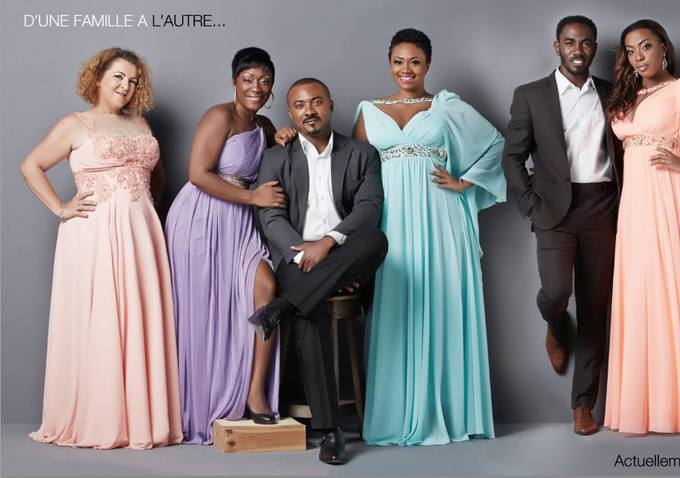
Run (Philippe Lacôte, Winner Conseil de l’Entente prize):
L’oeil du Cyclone (Sekou Traoré, Third Prize Winner for Feature Film, Winner Best Actress, Best Actor, and ECOWAS Intégration special Prize):
Miners Shot Down (Desai Rehad, First Prize Winner for Documentary):
I tried and failed to see Abderrahmane Sissako’s Timbuktu (FESPACO Winner for Best Set Design and Best Music), the controversial film about jihadists in Mali that received a 2015 Oscar nomination, taking home a staggering 7 Césars from France’s national film awards. On the first day it screened, hundreds of us gathered outside of Cine Burkina were told the theatre was already full, as the patrons who had watched the film before it refused to leave. It turned into a full-fledged altercation when local media pulled out their tape recorders and began questioning the officers at the door, declaring it an injustice.
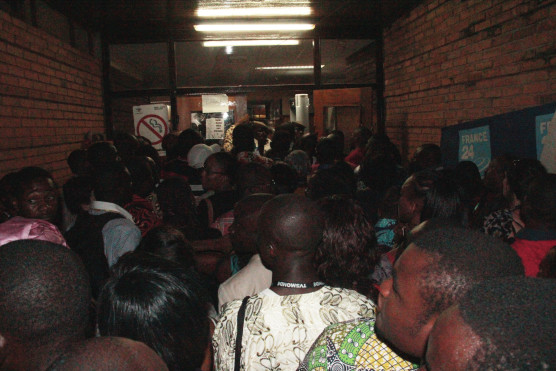
Forty-five minutes after the film started, a diehard group of 20 of us remained at the door. Olivia Pope-style, I waited till I saw someone who looked in charge and, flashing my festival badge, shouted in English and French that I was a director in competition. The man looked alarmed, reluctantly admitting us into the theatre where we found patrons overflowing the seats and sitting on every inch of bare floor. In a certain light, it was the most beautiful thing I’d ever seen: people of all ages, races, and nationalities clamoring to watch a film by an African director. But from where we had wedged ourselves into the room, we couldn’t even see the whole screen. Disheartened, I turned back (and didn’t return the following day, when I heard some arrived 6 hours early for the second screening).
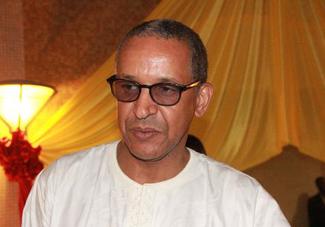
Leaving the theatre, I heard there was a gala happening at the Prime Minister’s house. Though invitations were supposedly delivered to the hotel, the concierge seemed to know nothing about it. Taking a chance, I caught a cab to Ouaga de Mille—the suburbs, where most of the embassy buildings are—hoping there was a way to get in the door without one.
Flashing my badge again, the security let me in and I took a seat beside Adoma at a dinner table. The gala was a star-studded event with a five-course meal, speeches, performances, and a banquet table of dignitaries. Twenty minutes later, who sat down at the table beside ours?— Abderrahmane Sissako himself.
When there was a break in the program, we rushed over to meet him, swamping him with handshakes and photos. Sissako was an incredibly gracious human being, taking personal time with each of us. I reminded him about how, years ago, he had shown Waiting for Happiness to our NYU graduate film class. It was one of the highlights of my experience, topped only by meeting him that day. Walking back to my chair, I had to pinch myself to make sure it was real. I couldn’t believe that, after a disastrous attempt to see Timbuktu, I’d spoken one-on-one to Sissako himself.
It was all coming full circle.
EVENTS
The press, filmmakers, and patrons all seemed to have different schedules, some with more information than others. As a director in competition, I was invited to everything—including the VIP events, which required special invitations, though they sometimes arrived late, not at all, or after we’d already left the hotel. At one point, true story, I even had to talk my way past two guards at the Prime Minister’s residence to attend a festival gala.
Some events, like the Master Class on mise en scène, led by Sissako at l’Institut Supérieur de l’Image et du Son, were strictly closed door. Unfazed, I elbowed my way in, crashing a Q&A session (in French only) with film students from across the continent.
FESTIVAL ROUNDUP
My second screening of Aissa’s Story went brilliantly. Cine Burkina was packed, the projectionist had the right copy of the film—I ran into the booth to check, leaving behind an extra copy—and I asked Djia to translate my remarks, so that I could communicate clearly with the audience.
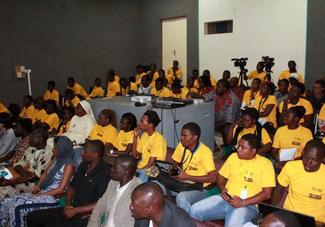
After the screening, I was swamped by a barrage of patrons, students, journalists, programmers, and even a distributor. By the end of the day, I’d done several interviews. By the end of the week, I’d done additional video interviews for VICE and Al Jazeera America, and networked with executives from Canal+, TV5Monde, and all the major African film festivals. Programmers from London to Germany to Zanzibar expressed an interest in my film. Their festivals will help broaden my network, laying a strong foundation for my upcoming debut feature film. As far as screenings go, it was the most successful one I’d ever had, the effects of which will be felt for months and years to come.
Popular opinion held that the festival was put on so last minute that it was a wonder if happened at all. And though burning down the Parliament and Hotel Independance went a long way to securing the revolution, the absence of a central meeting place for filmmakers made networking more difficult. I had a hard time finding other directors, discussing my film, and planting the seeds for future collaborations.
It wasn’t until halfway through the week when we found out that many directors were meeting up after dark at La Foret restaurant (try their fufu and foutou sauce graine), where many of the winners ate dinner the night after the awards ceremony, before boarding our respective planes for home.
That’s really the magic of FESPACO: despite all of its hiccups, when it comes together the results can be quite magical. With a little more organization, the experience could have been a lot smoother for invited filmmakers. Although my Naija grit and French listening tapes came in handy, I had to talk my way out of far more sticky situations than I would have liked. It was not lost on me, however, that my badge conferred with it a set of privileges that festival patrons didn’t enjoy. More efforts definitely could have been made to include non-French speakers in the festivities, although the organizers provided excellent translators for key events such as the closing awards ceremony.
I’ve never before seen a closing reception with as much fanfare as FESPACO. Dignitaries walked the red carpet, some receiving a full military salute. Transitional President Michel Kafando was in attendance and guests watched performances from musicians and dancers. There were some predictable winners, like Sekou Traore’s L’œil du Cyclone, and others, like Hicham Ayouch’s Fievres (First Prize Winner Étalon de Yennenga), that were complete surprises. Some critics felt the selections were motivated by political above artistic concerns, calling into question the integrity of the jury.
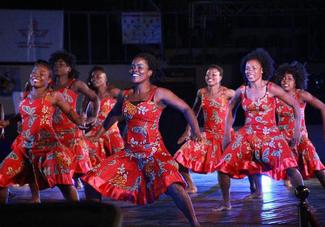
Curiously, Sissako’s Timbuktu won none of the major prizes. And this year’s new Thomas Sankara prize, for a short film “celebrating the Pan-African creativity and the hope embodied by Thomas Sankara,” went to Tunisian director Leyla Bouzid’s Zakaria when Burkinabé director Cedric Ido’s Twaaga seemed like a certainty.
While Francophone men continued to dominate the awards, women directors and women’s themes have a strong presence in competition—with Dyana Gaye winning Best Female Director and Integration prizes for Des Étoiles—which shows that times are changing for the better. Several critics supported the idea of establishing an Audience Award, given that certain decisions made by the jury seemed out of step with popular sentiment. Additionally, I would suggest creating a forum for women filmmakers to network and collaborate, two activities that are key in fostering equity in the industry.
I applaud the inclusion of digital films, but the organizers must continually strive for a level of artistic integrity, rising above political considerations.
All in all, FESPACO was a whirlwind of screenings, Q&As, interviews, and VIP events, one of the most popular and important festivals I’ve ever attended. Like it or not, all the major players working in African film today were there, making it a festival that cannot be missed. I’ll definitely be back!
This article originally appeared on the blog Shadow & Act.

